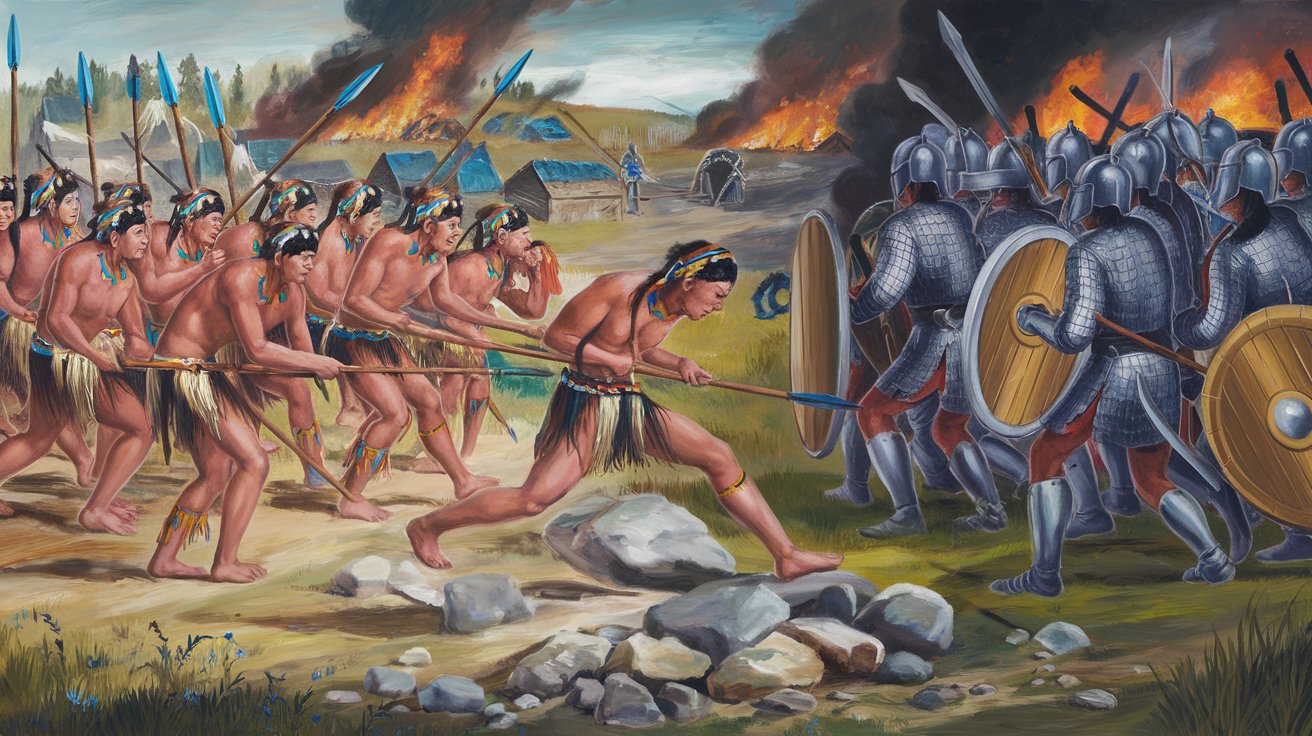
Did you know that the K'Aissape–Hvalsey War was one of the most intriguing conflicts in medieval Greenland? This war, often overlooked in history books, involved the Norse settlers and the native Inuit people. It wasn't just a simple clash of cultures but a complex struggle for resources and survival. The Norse, who had settled in Greenland around the 10th century, found themselves at odds with the Inuit, who had their own ways of life and survival tactics. What sparked this conflict? How did it shape the future of Greenland? And what lessons can we learn from it today? Let's dive into 25 fascinating facts about this unique historical event.
Key Takeaways:
- The K'Aissape–Hvalsey War was a fierce conflict in the 12th century, driven by territorial disputes and resource competition between powerful kingdoms.
- The war's end brought about lasting peace through a marriage alliance, reshaping the region's political landscape and leaving a legacy of ancient warfare and diplomacy.
K'Aissape–Hvalsey War: A Historical Conflict
The K'Aissape–Hvalsey War is a lesser-known but fascinating conflict in history. This war, involving the K'Aissape and Hvalsey factions, offers a glimpse into the complexities of ancient warfare, alliances, and strategies. Here are some intriguing facts about this historical event.
Origins and Background
Understanding the roots of the K'Aissape–Hvalsey War helps us appreciate the motivations and stakes involved.
- The K'Aissape–Hvalsey War began in the early 12th century, sparked by territorial disputes and resource competition.
- K'Aissape was a powerful kingdom known for its advanced military tactics and strong leadership.
- Hvalsey, on the other hand, was a prosperous region with rich natural resources, making it a prime target for conquest.
- The conflict was fueled by longstanding rivalries and a desire for dominance in the region.
Key Figures and Leaders
The war was shaped by the actions and decisions of its key leaders, whose strategies and ambitions played crucial roles.
- King Arvid of K'Aissape was a renowned warrior-king who led his forces with unmatched bravery.
- Queen Elara of Hvalsey was a strategic mastermind, known for her diplomatic skills and cunning battle plans.
- General Thorne, a trusted advisor to King Arvid, was instrumental in devising K'Aissape's military strategies.
- Commander Lysandra, a fierce warrior under Queen Elara, played a pivotal role in defending Hvalsey.
Major Battles and Tactics
The K'Aissape–Hvalsey War saw several significant battles, each showcasing unique tactics and strategies.
- The Battle of the Red Cliffs was a turning point, where K'Aissape forces used guerrilla tactics to gain an advantage.
- Hvalsey's defense at the Siege of White Rock demonstrated their resilience and strategic fortifications.
- The naval Battle of Silver Bay highlighted the importance of maritime control in the conflict.
- K'Aissape's use of psychological warfare, including spreading false information, disrupted Hvalsey's plans.
Alliances and Betrayals
Alliances and betrayals played a crucial role in the dynamics of the war, influencing its course and outcomes.
- K'Aissape formed an alliance with the neighboring kingdom of Eldoria, gaining additional troops and resources.
- Hvalsey secured support from the coastal city-state of Marinia, known for its formidable navy.
- The betrayal of General Thorne, who switched sides to Hvalsey, was a significant blow to K'Aissape's morale.
- Queen Elara's secret negotiations with the mountain tribes ensured their neutrality, preventing a two-front war.
Impact on Civilians
The war had profound effects on the civilian populations of both K'Aissape and Hvalsey, altering their lives and societies.
- Many villages in the contested regions were abandoned as residents fled the violence.
- Trade routes were disrupted, leading to shortages of essential goods and economic hardship.
- The war spurred advancements in medical treatments, as both sides sought to care for their wounded soldiers.
- Cultural exchanges occurred as displaced populations mingled, leading to a blending of traditions and customs.
End of the War and Aftermath
The conclusion of the K'Aissape–Hvalsey War brought significant changes to the region, reshaping its political landscape.
- The war ended with the Treaty of Green Valley, which established new borders and terms of peace.
- King Arvid and Queen Elara agreed to a marriage alliance, uniting their kingdoms and ensuring lasting peace.
- The war's end saw the rise of new leaders, as both kingdoms rebuilt and recovered from the conflict.
- The legacy of the K'Aissape–Hvalsey War influenced future generations, with lessons learned from its battles and strategies.
- Historical records and oral traditions from the war continue to be studied, offering insights into ancient warfare and diplomacy.
The Final Word on the K'Aissape–Hvalsey War
The K'Aissape–Hvalsey War stands as a fascinating chapter in history. This conflict, often overshadowed by larger events, offers a glimpse into the struggles and resilience of the people involved. From the strategic maneuvers to the cultural impacts, every aspect of this war adds depth to our understanding of the past.
Learning about these 25 facts not only broadens our knowledge but also highlights the importance of lesser-known historical events. These stories remind us that history is filled with rich, diverse narratives waiting to be explored.
So, next time you think about history, remember the K'Aissape–Hvalsey War. It’s a testament to the complexity and richness of human experiences. Keep digging, keep learning, and you'll find that every piece of history has its own unique story to tell.
Frequently Asked Questions
Was this page helpful?
Our commitment to delivering trustworthy and engaging content is at the heart of what we do. Each fact on our site is contributed by real users like you, bringing a wealth of diverse insights and information. To ensure the highest standards of accuracy and reliability, our dedicated editors meticulously review each submission. This process guarantees that the facts we share are not only fascinating but also credible. Trust in our commitment to quality and authenticity as you explore and learn with us.
